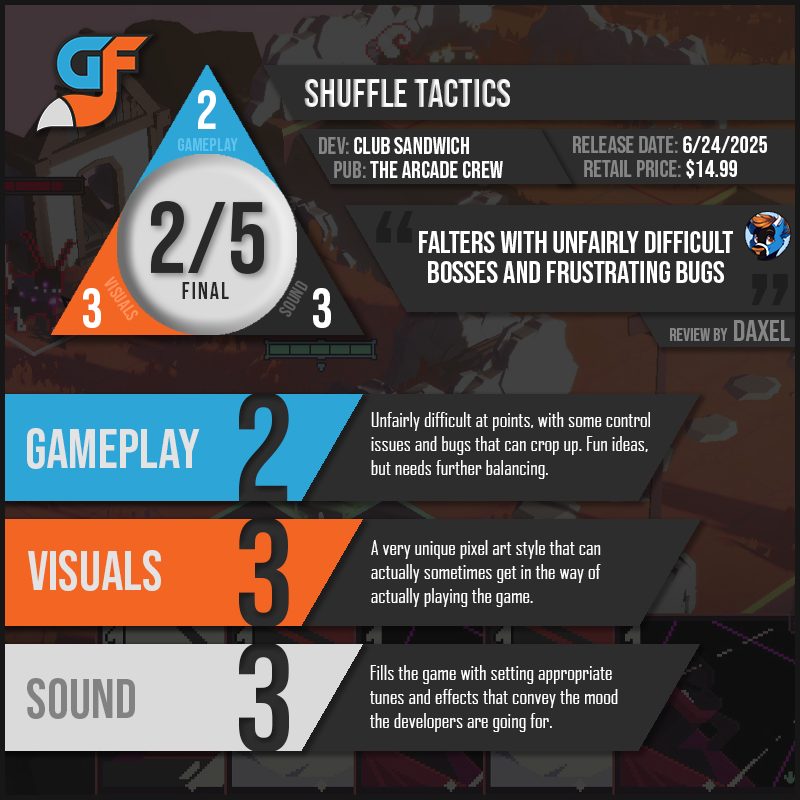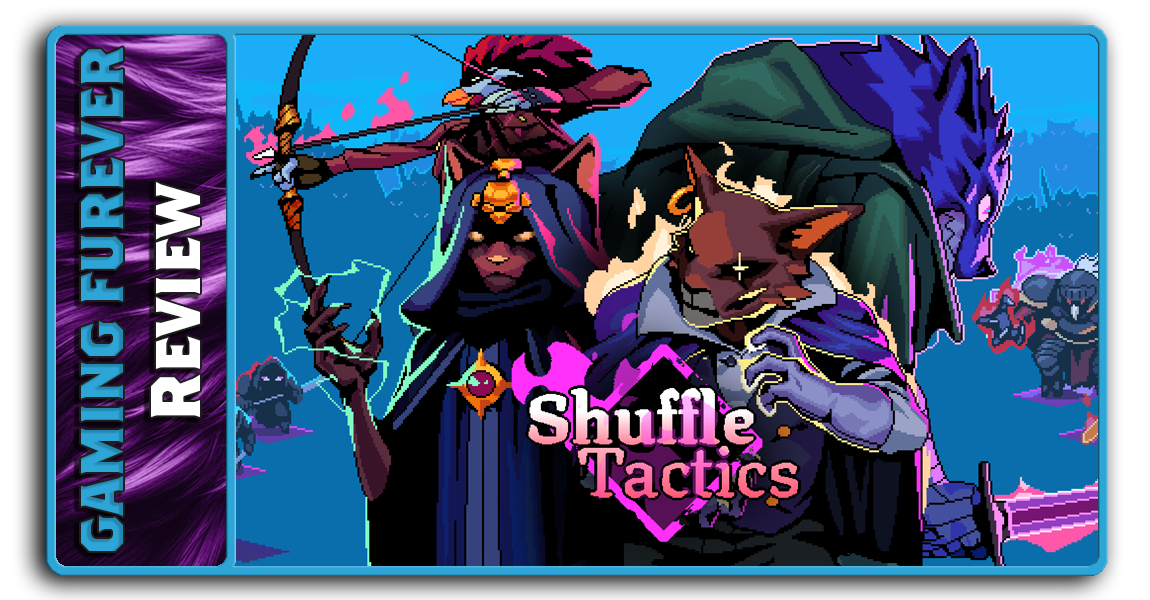Roguelikes are meant to be tough. The best ones are designed in a way that the gameplay loop encourages you to learn as you fail. That is, until your learning becomes so good that you succeed. Then maybe they’ll add on an additional challenge, or another stepping stone. Some even reward you as you progress, making it easier to succeed, eventually. Not all of them do though, and that’s not inherently a fault. Sometimes it’s rewarding to try, try, and try again…as long as things feel fair in the end. Unfortunately, as much as I loved the preview demo I played of Shuffle Tactics, the full experience of the newly released game ratchets up the difficulty with unforgiving randomness when it comes to succeeding in this roguelike genre it firmly sits within.
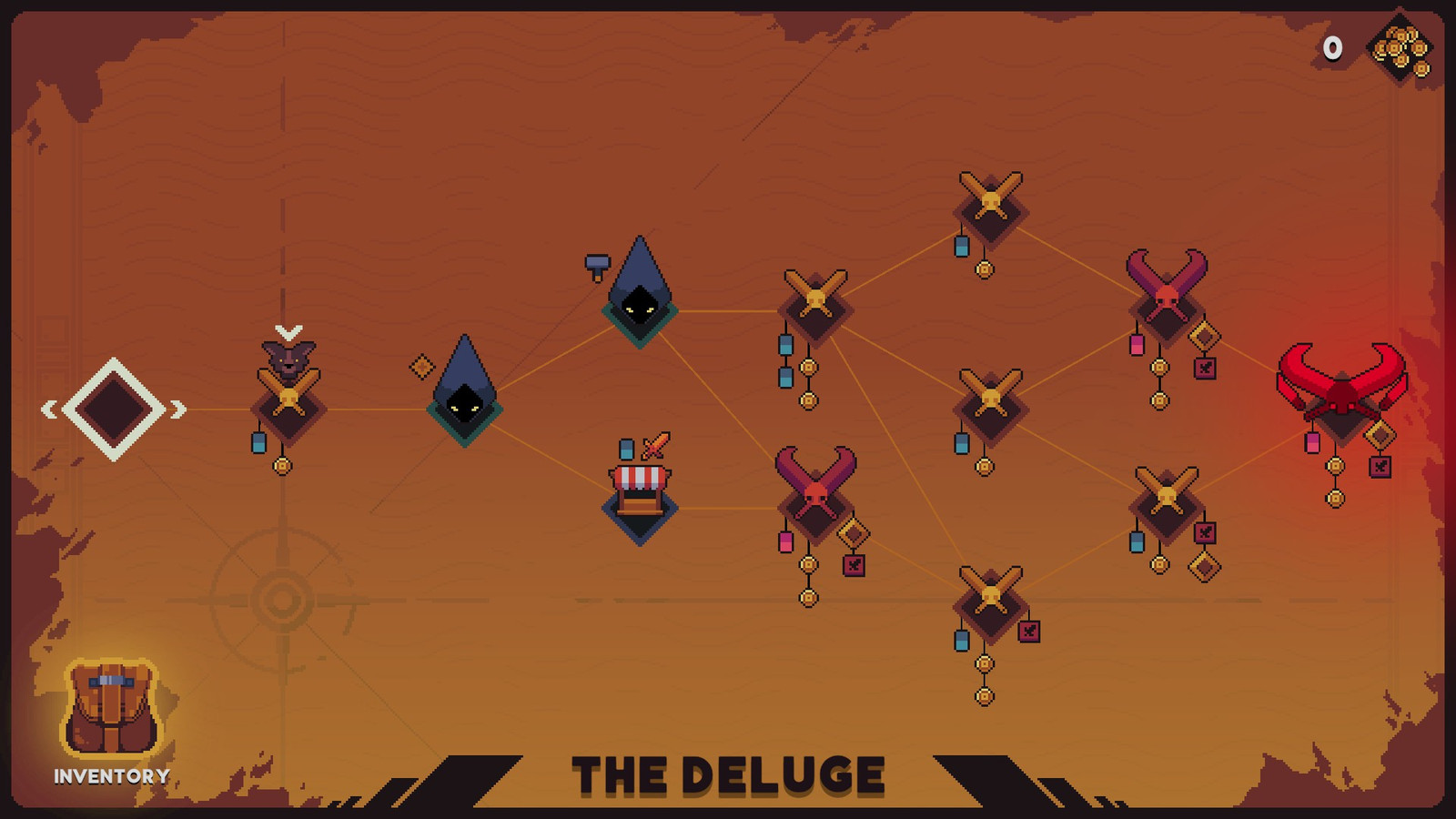
Saving the World, One Card at a Time
In Shuffle Tactics, you choose a hero (you start with just one, a doberman knight) with a special skill and a dream. His skill being his ability to throw his sword at enemies (and recall it back) and that dream being taking down the evil King Ogma, who (I guess) lies at the end of a successful run. I say “I guess” because I never even got to see King Ogma (more on that later.) During each run, you proceed through the typical branching path of options, each providing choices like battling foes of different difficulties with respectively increasing rewards, picking up new cards and charms to improve your deck at vendors, and a bevy of other options meant to give you an ever-improving chance of thwarting your foes and proceeding to the next area by defeating a big boss at the end. There are also sidekicks able to be earned, which graciously allow you to play with their unique card decks to synergize effective battle strategies. You also earn gold that you can use at shops when you win battles, allowing you to decide what you want specifically instead of relying on whatever the random vendors decide to divvy out in one of your trips to their tile on the main area paths. In each battle, you use a set number of action points during each turn to try and complete whatever the objective is for that specific battle. This could be to kill all enemies, or destroy a radiating tower, for example. Once you do, you move on to your next choice in the path, fully refilling your health and the health of your sidekicks.

What I Enjoyed
Let me start off my analysis of the game with what I found enjoyable in my experience. I felt the pixel art aesthetic was used well, with interesting animations given to the heroes, sidekicks, and enemies. The bosses, especially, were wildly inventive, with a dark, evil, necrotic aura oozing through their visuals. The isometric levels were well constructed with a focus on using the varied vertical obstacles and combat areas to maximize attack positioning. I could easily see the vision of the developer, and what they were trying to accomplish. When Shuffle Tactics tactics work, it feels good to win a big battle and move on. Coordinating what my hero and their allies should do to help each other out felt really important and consequential for the most part, and when things seemed balanced, the concepts really shined. Also, the game ran well and things moved snappily along through each run. That’s not to say it’s the fastest roguelike I’ve played, but it didn’t waste too much time with frivolous pomp and circumstance in the presentation department.
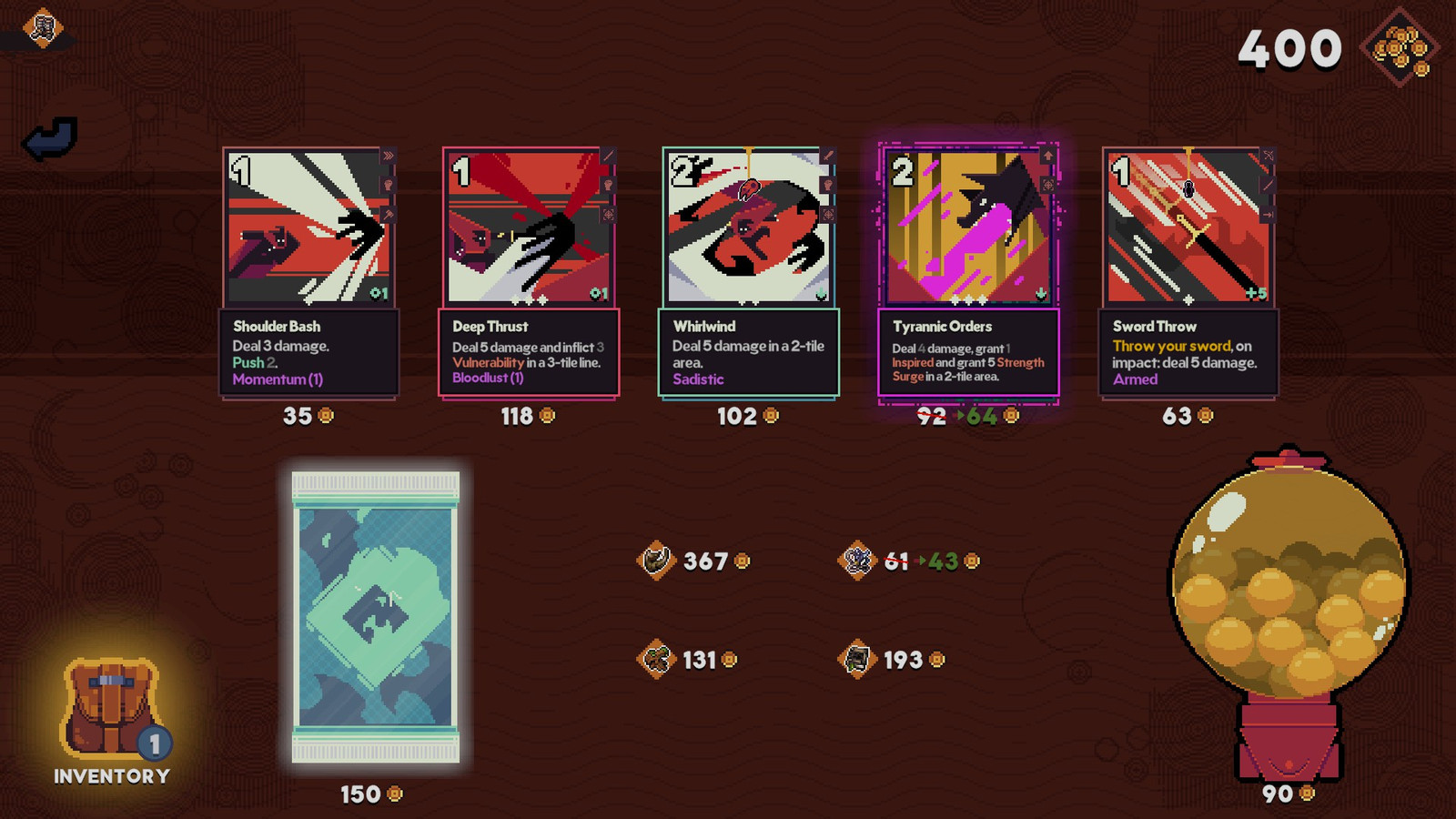
To Be or Not To Be...It's up to RNG
The main issues I have with Shuffle Tactics lie in the battles themselves, and especially the final boss of each area. The game claims to have 10 bosses within it, and I got to face off against four of them. I was only ever able to beat two, and I have a feeling that future bosses and elite encounters (those are the harder battles you can choose to face with the potential choices before the boss fight) will only be more difficult. Remember, this is a roguelike that doesn’t give you permanent upgrades between each run. Yes, you can unlock and find more charms, cards, and relics that give you a leg up during runs, but those aren’t necessarily more or less powerful than the ones you start with. Even in my experience, the ones that were more effective still came with caveats, like costing extra action points or inflicting pain on yourself when they’re played. The game is so concerned with trying to make you not too powerful that it forgets that you do eventually need to have some kind of leg up on your foes. I found myself in some battles completely overwhelmed by the challenges I was facing. It wasn’t just one kind of obstacle either. Sometimes it was the number of enemies that was constantly emerging from spawn towers. On most occasions it was groups of elite enemies with health 2-3x mine that constantly barraged half the stage tiles with bombs, poison, weakening spells, immobilizing vines, or any number of hazards. After attempting 8 runs of the game, I didn’t feel like I was learning much in the ways of having a way to “out tactic” the enemies I was facing.
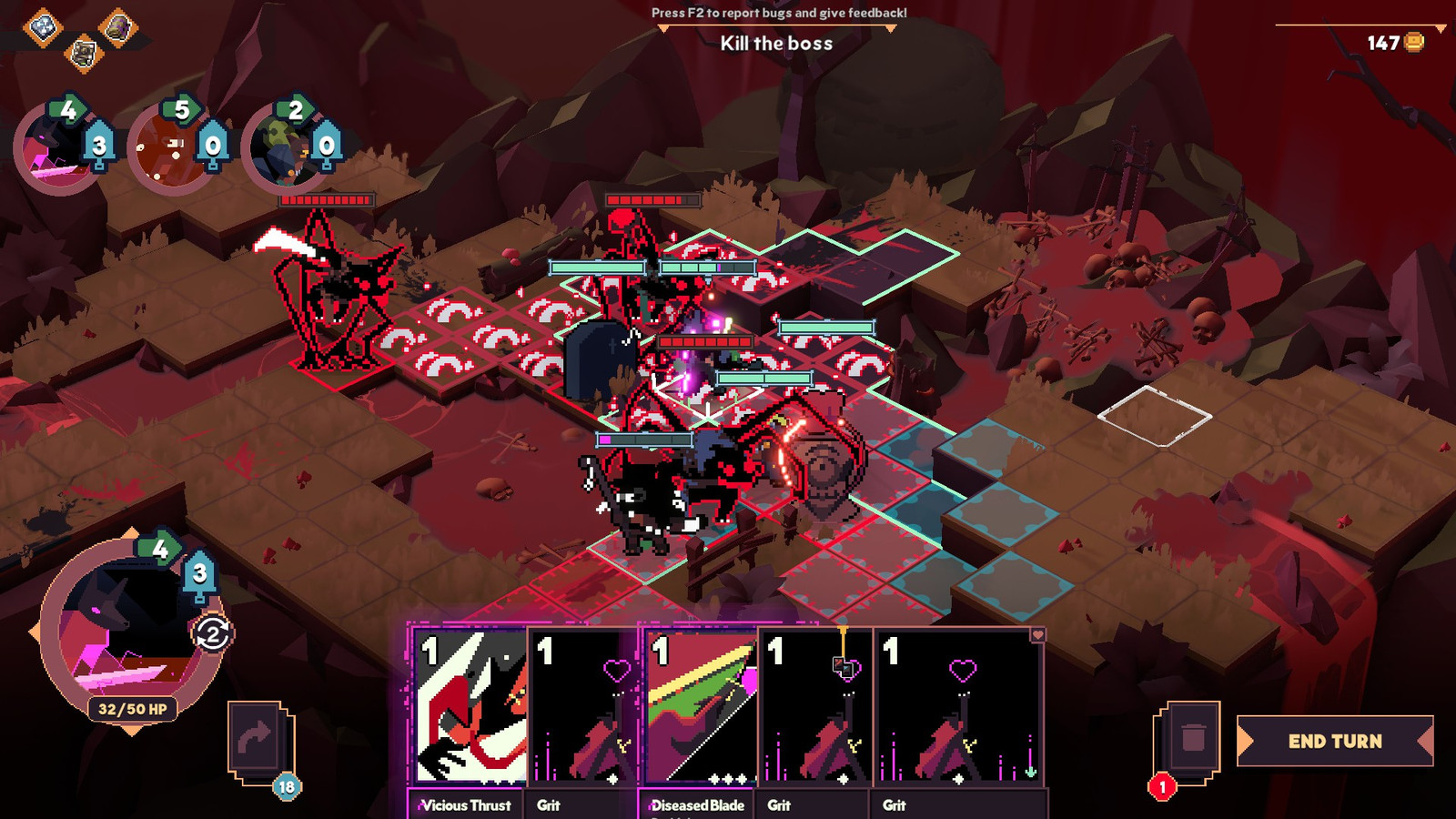
Especially challenging games are only enjoyable, to me, if you know that you have a way to win them with a combination of skill and even sometimes luck. Luck is a part of deck building games. You hope to draw the right cards, or attach the right charms that add bonuses to specific cards, or have that perfect sidekick by your side when a certain type of hard boss finds its way to your run. What you don’t want is to feel like no amount of skill or luck can propel you to victory. This is especially true when a game like Shuffle Tactics places a lot of trust in its players to “figure out” the more intricate mechanics of its combat, like status effects, range of attacks and moves, along with a ton of other stuff buried in little status icon, highlighted keywords, and colorful health bars. I don’t mind deducing these things if I know I’ll be rewarded with the ability to use the gleaned info to overcome most of what the game throws at me (eventually, when it comes to roguelikes.) However, I always felt like my demise was potentially right around the corner, through no fault of my own, just because I happened to randomly be matched up against a destructive force the likes of which Asteria has never seen.
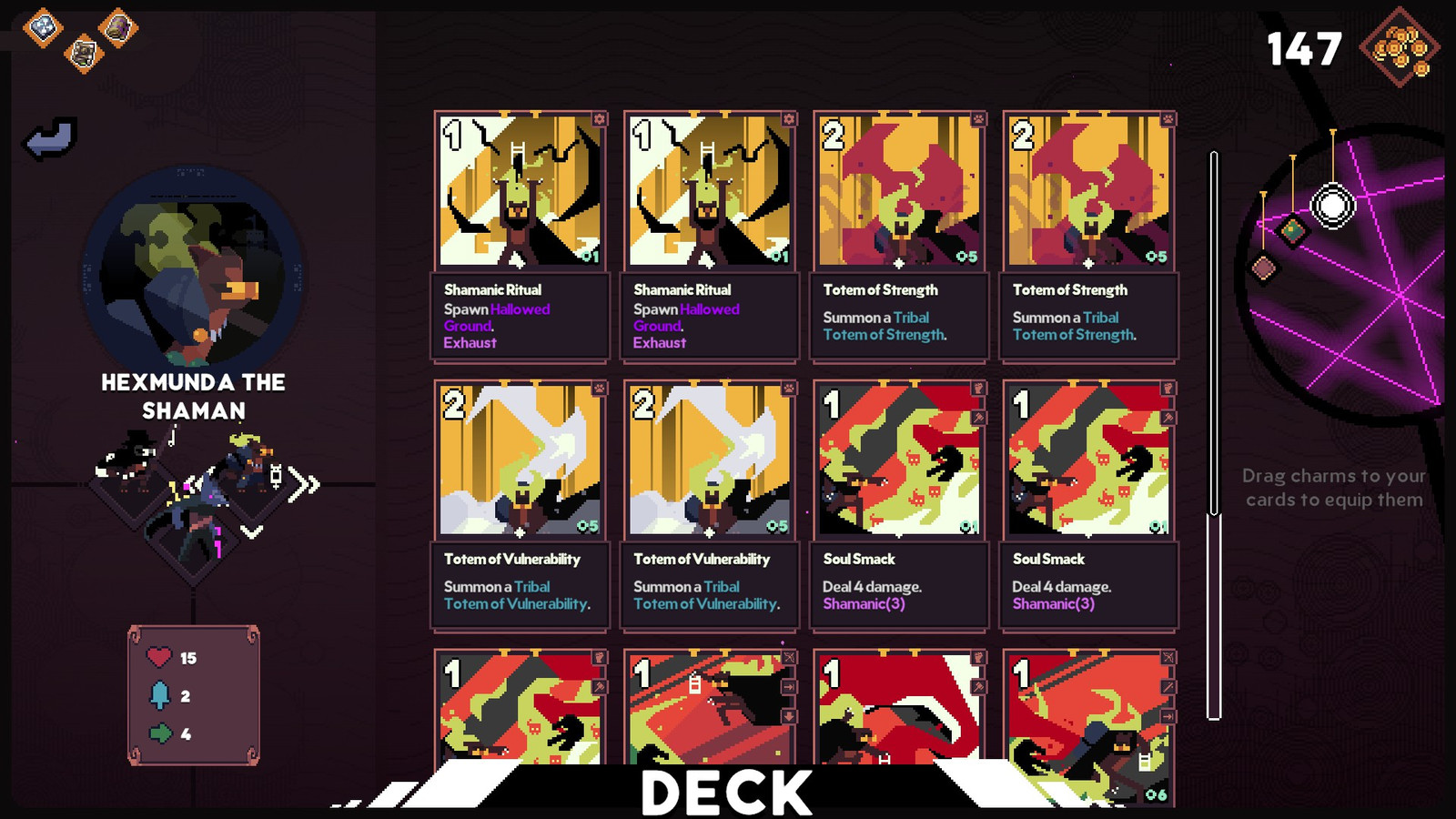
What You See and What You Hear
All of this is without mentioning the visual and control issues that are present as well. Though the game can be beautiful in a very unique way, all of the idle movement and similar color schemes of enemies provide a lot of visual clutter when things get really busy with enemies, debuffs on the ground, glimmer floating around, status effects, and more. Also, you’re expected to manually click the tile you want to target or move to, which, because of the amount of other clickable things in the way, make moving or attacking the target you want to a much more difficult task than it should be. I didn’t run into any bugs during my runs, but I’ve seen others report as such. The developers do seem to be actively squashing them as they’re found, but this isn’t an early access title, so the issues present do seem to be justifiably criticized. I did want to mention that the game has “accessibility” options that allow you to immediately unlock the other two heroes and add an extra action point to your play. That’s wonderful, but I don’t want to feel like I’m “cheating” to make progress, personally. Additionally, even with that extra action point, I still couldn’t proceed past area 2.
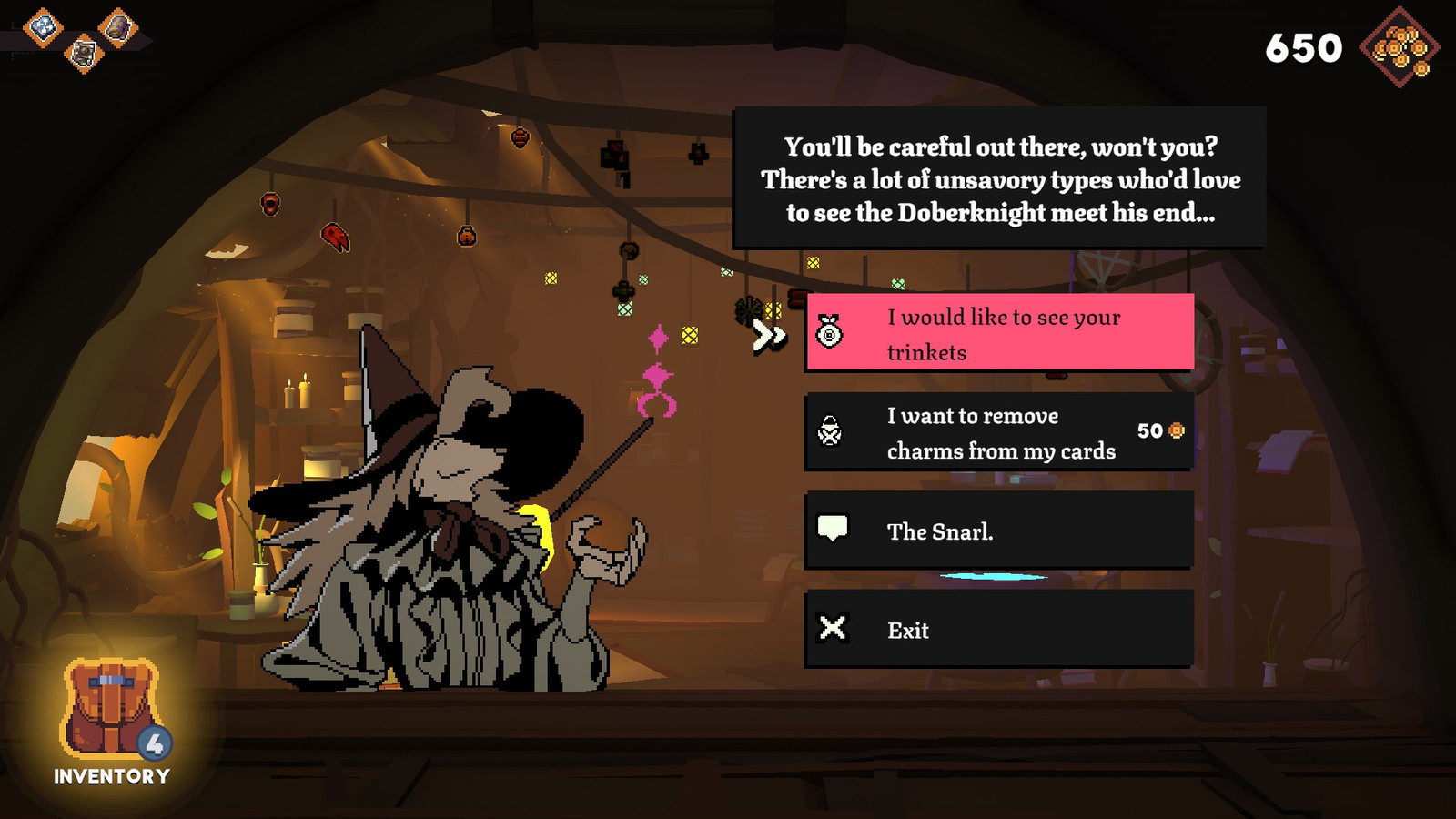
To wrap things up, I’ll say that the audio side of things was nice, with good use of a thumping, impending conflict sounding musical backdrop. The attack sounds were satisfying, with sword slicing and projectiles having that extra oomph that helps you feel the power of the attacks. Even when enemies were targeting me, their hits felt just a bit more hurtful with the added sound effects. Selection clicks and music for NPCs was nice and appropriate for the setting, but not as varied as it possibly could have been. It all blended together nicely. However, there were points during the game where it would fade out and be out for a while for seemingly no reason that I could determine, and then eventually come back in. But other than that, it was good enough to not be annoying, but not varied enough to make it stand out.
In Conclusion
Shuffle Tactics has some great bones and ideas. If anything, it feels like a great candidate for Early Access balancing and bug fixing. However, it is a full release and one that retails for $14.99. Because of this, it is taking a bit more scrutiny from me in its present state. I would love to be able to experience the rest of the bosses and levels, but with the level of difficulty being as it is, it’s hard for me to not want to “wait and see” for now before taking on the path to King Ogma again.
